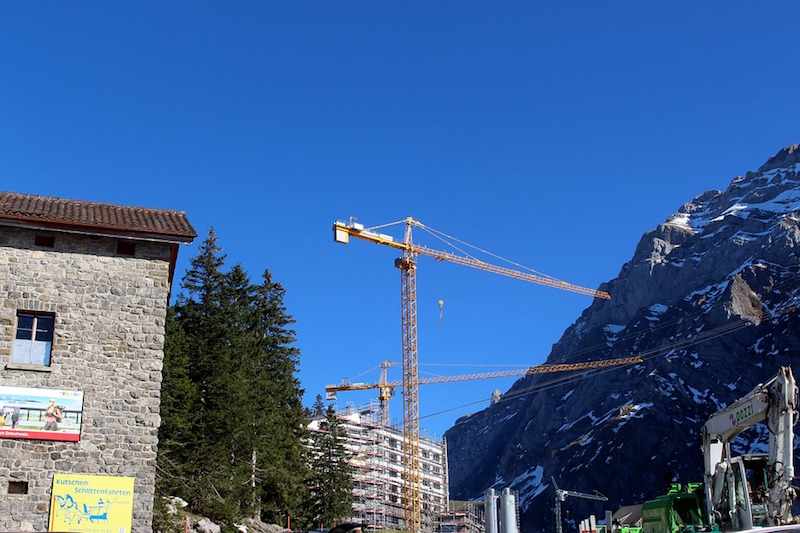According to a recent report by Lodging Econometrics (LE), the U.S. Construction Pipeline stands at 4,973 Projects/598,371 Rooms, with projects up 7% Year-Over-Year (YOY).
There are 1,520 Projects/198,710 Rooms Under Construction, up 10% YOY, and are the highest counts recorded this cycle. Projects Scheduled to Start Construction in the Next 12 Months, at 2,312 Projects/264,924 Rooms, are up 5% YOY. Projects in Early Planning are at 1,141 Projects/134,737 Rooms and are up 8%, YOY. However, it’s slightly down from last quarter which, so far, is the peak level this cycle.
For the economy, the rate of growth may be low but it’s running on all cylinders. So, too, with the Total Pipeline whose growth rate is also stalling.
20% increase in new supply forecast for 2017 in the U.S.
448 Hotels/50,521 Rooms have already opened in the U.S. with another 573 Projects/64,385 Rooms forecast to open by year-end according to analysts at Lodging Econometrics (LE). The Total 2017 Forecast for 1,021 Projects/114,906 Rooms, represents a 20% increase over the actual number of Hotel Openings in 2016, which stood at 849 Hotels/99,872 Rooms. 344 of the New Openings, or 34%, will be in the Top 25 Markets.
Almost half of the hotels that are expected to open this year are Upper Midscale, at 477 Projects/46,093 Rooms and another 289 Projects/37,914 Rooms are Upscale. These two chain scales represent 75% of the 1,021 projects anticipated to open through the end of 2017. 497 of the projects will be between 100 and 200 rooms, while 464 of the projects will be Suburban locations.
LE forecasts that 1,160 Projects/133,880 Rooms will open in 2018 and another 1,193 Projects/137,393 Rooms will open in 2019, still a distance from the annualized New Openings peak of 1,316 Projects/140,227 Rooms, set in 2009.
Related Stories
Market Data | Jun 14, 2016
Transwestern: Market fundamentals and global stimulus driving economic growth
A new report from commercial real estate firm Transwestern indicates steady progress for the U.S. economy. Consistent job gains, wage growth, and consumer spending have offset declining corporate profits, and global stimulus plans appear to be effective.
Market Data | Jun 7, 2016
Global construction disputes took longer to resolve in 2015
The good news: the length and value of disputes in the U.S. fell last year, according to latest Arcadis report.
Market Data | Jun 3, 2016
JLL report: Retail renovation drives construction growth in 2016
Retail construction projects were up nearly 25% year-over-year, and the industrial and office construction sectors fared well, too. Economic uncertainty looms over everything, however.
Market Data | Jun 2, 2016
ABC: Nonresidential construction spending down in April
Lower building material prices, a sluggish U.S. economy, and hesitation among private developers all factor into the 2.1% drop.
Market Data | May 20, 2016
Report: Urban area population growth slows
Older Millennials are looking to buy homes and move away to more affordable suburbs and exurbs.
Market Data | May 17, 2016
Modest growth for AIA’s Architecture Billings Index in April
The American Institute of Architects reported the April ABI score was 50.6, down from the mark of 51.9 in the previous month. This score still reflects an increase in design services.
Market Data | Apr 29, 2016
ABC: Quarterly GDP growth slowest in two years
Bureau of Economic Analysis data indicates that the U.S. output is barely growing and that nonresidential investment is down.
Market Data | Apr 20, 2016
AIA: Architecture Billings Index ends first quarter on upswing
The multi-family residential sector fared the best. The Midwest was the only U.S. region that didn't see an increase in billings.
Building Technology | Apr 11, 2016
A nascent commercial wireless sensor market is poised to ascend in the next decade
Europe and Asia will propel that growth, according to a new report from Navigant.
Industry Research | Apr 7, 2016
CBRE provides latest insight into healthcare real estate investors’ strategies
Survey respondents are targeting smaller acquisitions, at a time when market cap rates are narrowing for different product types.

















